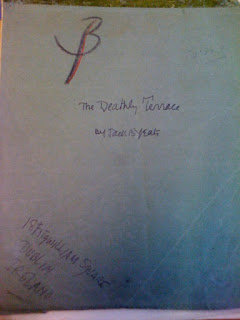Cataloguing of the Druid Theatre Company archive is finally nearing completion! The past few months have seen the production of an itemised catalogue and finding aid for the records of Druid Theatre Company from 1975 to 2008.
Just to explain and expand on the outcomes of the archival listing: the collection has been divided up into series that are named 1) Production Files 2) Press Files 3) Season Programmes 4)Scripts 5) University College Galway Drama Society 6) Druid Theatre – Building 7) Druid Theatre – History 8)Druid – The First Ten Years 9)Handover of Druid Theatre Company Archive 10) Druid in Review 11) Other Photographs 12) Non-Druid Productions.
The production files include descriptions of material from production by Druid. The files include playbills, posters, photographs, invitations, flyers, scripts, tour handbooks and other related documents. The press files feature Irish and international reviews of Druid productions, interviews with cast members, directors and production crew members, feature articles and general coverage on Irish theatre, local amateur productions and Irish arts.
 |
| La Baladin du Monde Occidental, 1984 |
The files from the University College Galway Drama Society pre-date the formation of Druid theatre company and date as far back as the early 1970s and document the emerging careers of Garry Hynes, Marie Mullen and others. The collection of theatre posters includes one foreign gem, a poster of a production of “La Baladin di Monde Occidental” which is a version of The Playboy of the Western World by a French theatre company called Theatre du Perche. Produced in 1984 at the Jesuit Hall in Salthill in Galway, it’s a truly unique piece.
The collection features some thirty five boxes of material and is a truly unique research resource. The collection catalogue will be available in full in early February. Stay tuned to the NUI Galway Archives homepage and the NUI Galway archives Twitter account for updates!


















